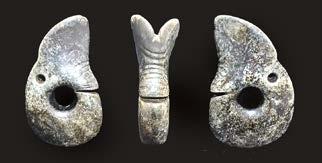
THREE jade dragons of different colors and sizes, and each around 5,000 years old, were among the more than 100 jade relics of the Hongshan Culture recently unearthed in North China’s Inner Mongolia Autonomous Region. The jade artifacts, found at the Yuanbaoshan archaeological site in Aohan Banner in the city of Chifeng during a four-month excavation work that began in May, include a palm-size, emerald green dragon that is the largest of its kind unearthed in northern China. The biggest jade dragon among these artifacts is 15.8 cm long, 9.5 cm wide and 3 cm thick. It is slightly longer than the one previously unearthed about 150 kilometers away at the Niuheliang archaeological site in Chaoyang, Liaoning province. The chubby, pig-headed dragons are iconic figures of the Hongshan Culture, which was an important part of the Neolithic period and encompassed present-day Inner Mongolia as well as Liaoning and Hebei provinces. Dating back 5,000 to 6,500 years, Hongshan Culture sites help form a relatively comprehensive picture regarding the origins of Chinese civilization. Apart from the architectural remains, human skeletal remains, burials, fire pits, and cylindrical object pits have also been discovered at the site. The unearthed artifacts include jade and painted pottery basins and tripod pottery cups, among others. The relics of the Hongshan Culture have attracted the attention of Chinese and foreign scholars since the beginning of the 20th century. It originated from a hilly area in suburban Chifeng called Hongshan, which means “red mountains.” So far, more than 1,100 Hongshan Culture sites have been discovered, mostly in the West Liaohe River basin in southeastern Inner Mongolia and western Liaoning.(China Daily) | 
